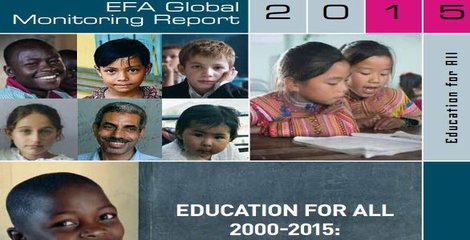On 12 October 2015 ,the United Nations Educational, Scientific and Cultural Organization (UNESCO) released a report on Gender and Education for All (EFA) 2000-2015: Achievements and Challenges.

Important Points on the Report
The report portrait the educational attainment of girls across the world.nly fewer than half the countries have achieved the goal of ensuring gender parity in both primary and secondary education before 2005.
- Between 2000 and 2015, the number of girls for every 100 boys has risen from 92 to 97 in primary education and from 91 to 97 in secondary education
- The number of countries that have achieved gender parity in both primary and secondary education from 2000 to 2015 has increased from 36 to 62
- Fewer than half of countries will have achieved the Education for All goal on gender parity in primary and secondary education by 2015
- Fewer than seven out of every ten young women in sub-Saharan Africa are expected to have basic literacy skills by 2015
- 62 million girls are still denied their basic right to education, the number of out-of-school girls has declined by 52 million in the last 15 years
- Although the goal of gender parity has not been met by all, progress towards gender parity is one of the biggest education success stories since 2000.
- Gender gaps in youth literacy are narrowing. However, fewer than seven out of every ten young women in sub-Saharan Africa are expected to be literate by 2015
- Challenges in achieving gender parity includes – school-related gender based violence and child marriages,almost one in five women who married was aged 15 to 19 in 2012.
- To solve this situation- provide education as a free service, giving alternative secondary education options for out-of-school adolescents and integrating gender issues into all aspects of policy and planning.
UNESCO Director-General Irina Bokova
AffairsCloud Recommends Oliveboard Mock Test
AffairsCloud Ebook - Support Us to Grow
Govt Jobs by Category
Bank Jobs Notification




